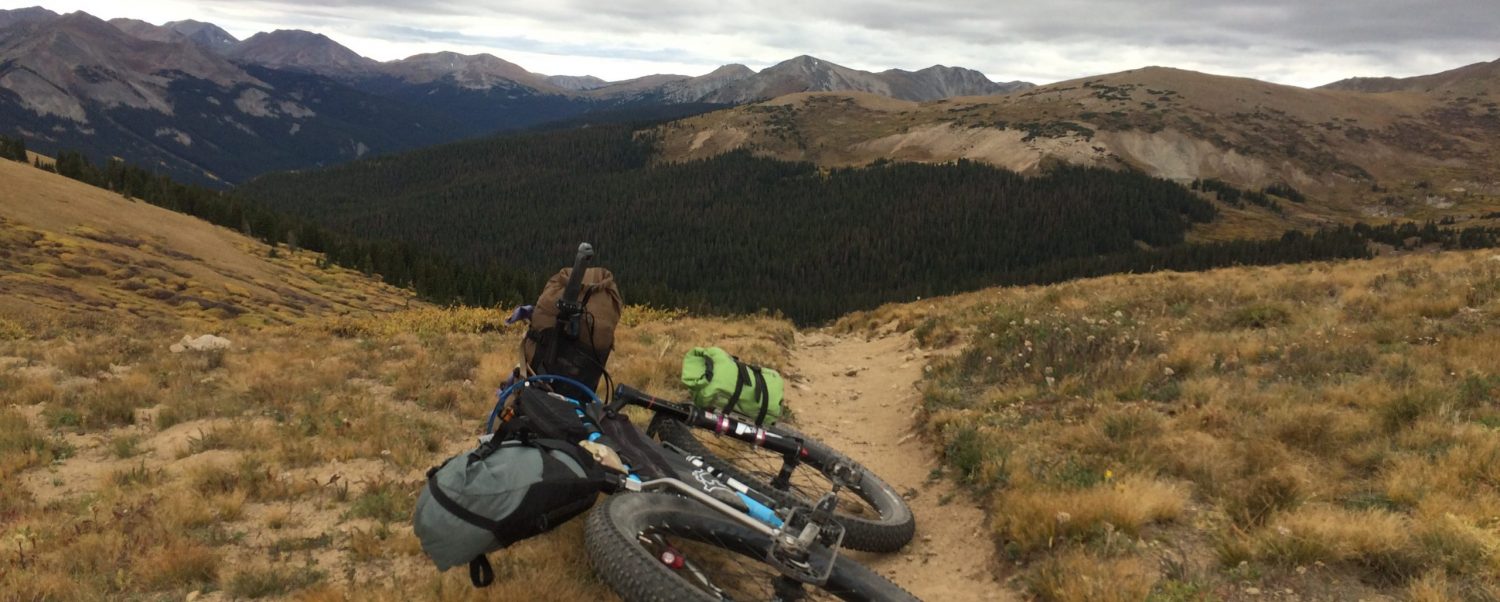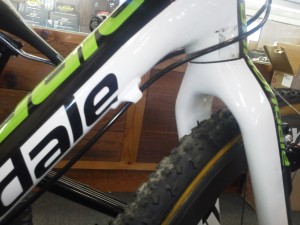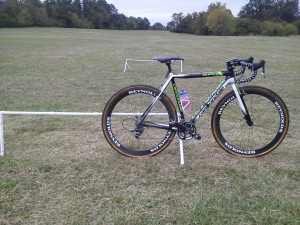I like fixing bikes.
It’s mostly about solving (or preventing) a problem (or several problems). Usually, it’s a worn out, broken, sticky, or otherwise compromised part, but sometimes, frame manufacturers give mechanics a problem with brand new bikes… the perfect example being the presence of normal, road bike cable housing stops on a cyclocross frame.
I’ve posted before about my dislike of open cable on any bike that will be ridden in any condition other than “dry.” It’s just dumb. There’s no point in putting a break in a bike’s cable housing if there’s any chance that, on a regular basis, you’re going to ride the bike in a manner that would foul the cables with mud and/or water. Even so, it’s how most cyclocross bikes are manufactured.
In the past, I’ve just dealt with it, changing out shift cable and housing on a somewhat regular basis for a stable of cyclocross bikes. I’ve also used Gore sealed housing kits, only to find that while, yes, they do keep stuff out, with modern shifters (cable routing under the bar tape) and drop handlebars, the amount of drag is terrible because of the interaction between the stiffness of the housing and bend from shifter around the bars (in their defense, the sealed housing kits work beautifully on mountain bikes and road bikes with the older-style, externally cabled shimano shifters). Just recently, I zip-tied a full length housing to the frame of Ryan’s “A” bike. It works flawlessly. I’ll also be the first to admit, though, it doesn’t look very good.
So, when I installed a Gore housing kit on my new Cannondale SuperX (yeah, I’m doubling up on Cannondales this season) and the shifting was crappy and heavy, I decided to go one up on the solid housing by using a drill to convert cable stop to “housing holder.”
Side note: Before I tell you all about taking a drill to my bike, let’s talk about warranty. Some bike companies can be evil, and, if you modify your frame in such a way, then your seat tube cracks up the middle, they’ll refuse your warranty, even though it’s highly obvious that the two events are, in no way, shape, or form, related to each other. From my dealings at the shop, I can tell you that Cannondale is not this sort of company (Niner isn’t, either). However, it goes without saying, that if one of my drilled cable stops breaks, falls off, or suffers any other cable-stop related malady, it’s my fault, and there is no warranty to speak of. Your frame manufacturer may be somewhere in the middle with their warranty philosophy… I’d advise you to find out prior to drilling if that sort of thing concerns you.
With that out of the way, let’s get to the good stuff.
I started by looking around on the internet for technique recommendations. I saw some good advice about protecting the frame with tape in case the drill bit gets jumpy, so I put a layer of Gorilla Tape around the downtube housing stop:
Next, I started with a small drill bit. How small? No idea on the numerical size, but it was a little bigger than the existing hole. Even with a not-so fresh drill battery, the bit went through the carbon stop like it was made of butter (so easy, I ended up not using tape when I drilled the stop on the chainstay. A metal stop may have offered more resistance). I prettymuch just repeated the process with increasingly large bits until a piece of 4mm housing fit through the stop with just a little friction. Done and done:
Depending on the frequency of cable stops on your frame, you will likely still need to use at least a couple of zip-ties to run the full-length housing. I typically wrap a piece of electrical tape around the tubing prior to mounting the housing/zip tie in order to keep the frame from getting rubbed at the mounting location. It’s still not perfect on the “looks” scale, but it’s a lot nicer than having the cable housing run next to unused housing stops.
Side note #2: I use Jagwire L3 lined cable housing for the best shift quality, though I’ve used less expensive stuff with equal success. The thought that using full-run housing will noticeably increase friction and drag on the cable is balderdash. Sure, from a physics standpoint, yes, there’s more friction on the cable when there’s more housing. However, I’d like to see you do a blind, side-by-side test, and see if you can tell the difference in lever feel between broken and solid housing. You’re sure as heck gonna notice a difference when the broken housing gets fouled. I digress…
I rode yesterday. The verdict? AWESOME. It’s only a matter of time before the Scott Addict CX undergoes the same surgery:
With the forecast for Sunday’s Reservoir Cross looking like “mud,” I can’t wait to plow through the slop with perfect shifting.




There are cable stop adapters available so that one doesnt have to use the drill method. I use Alligator brand, they go on easy and hug the frame for a smooth look as well. Your way is cool though and looks pretty slick.
I’ve tried a few different styles of those, and I’ve found that nothing works well with carbon stops because the “exit” side of them is slanted instead of flat. I think they’d work well on anything with two parallel sides, though.